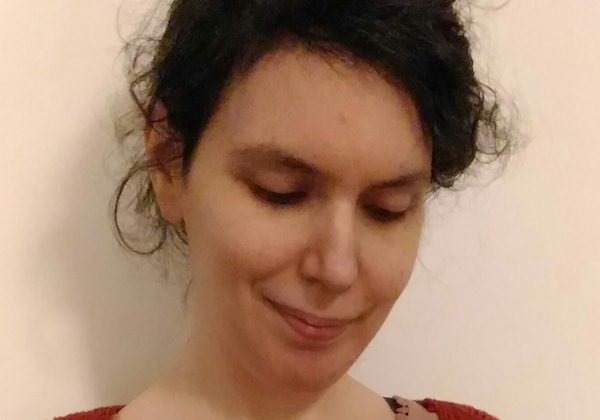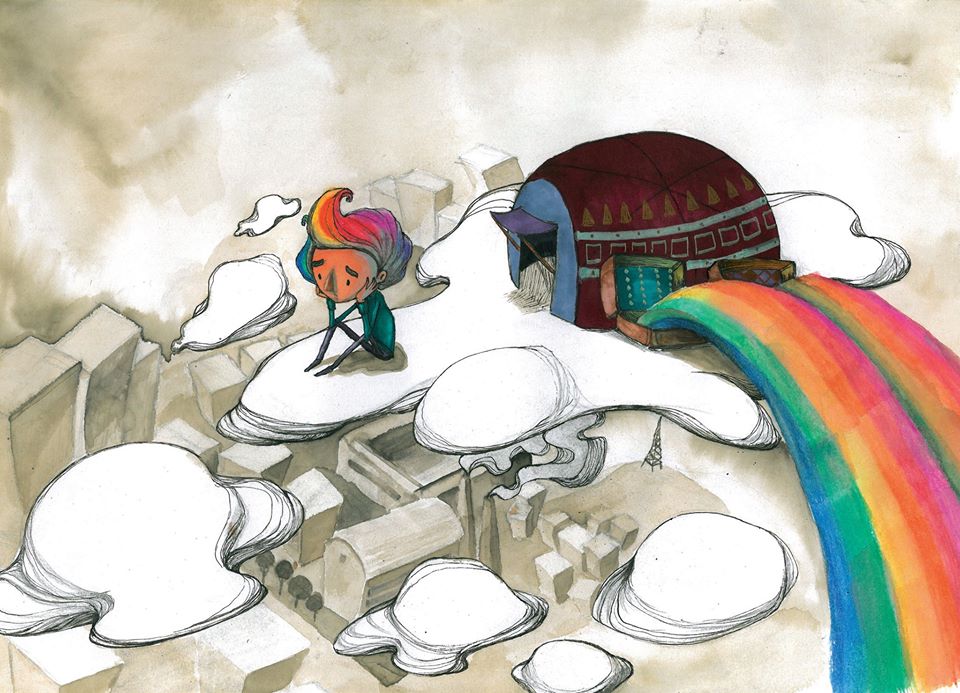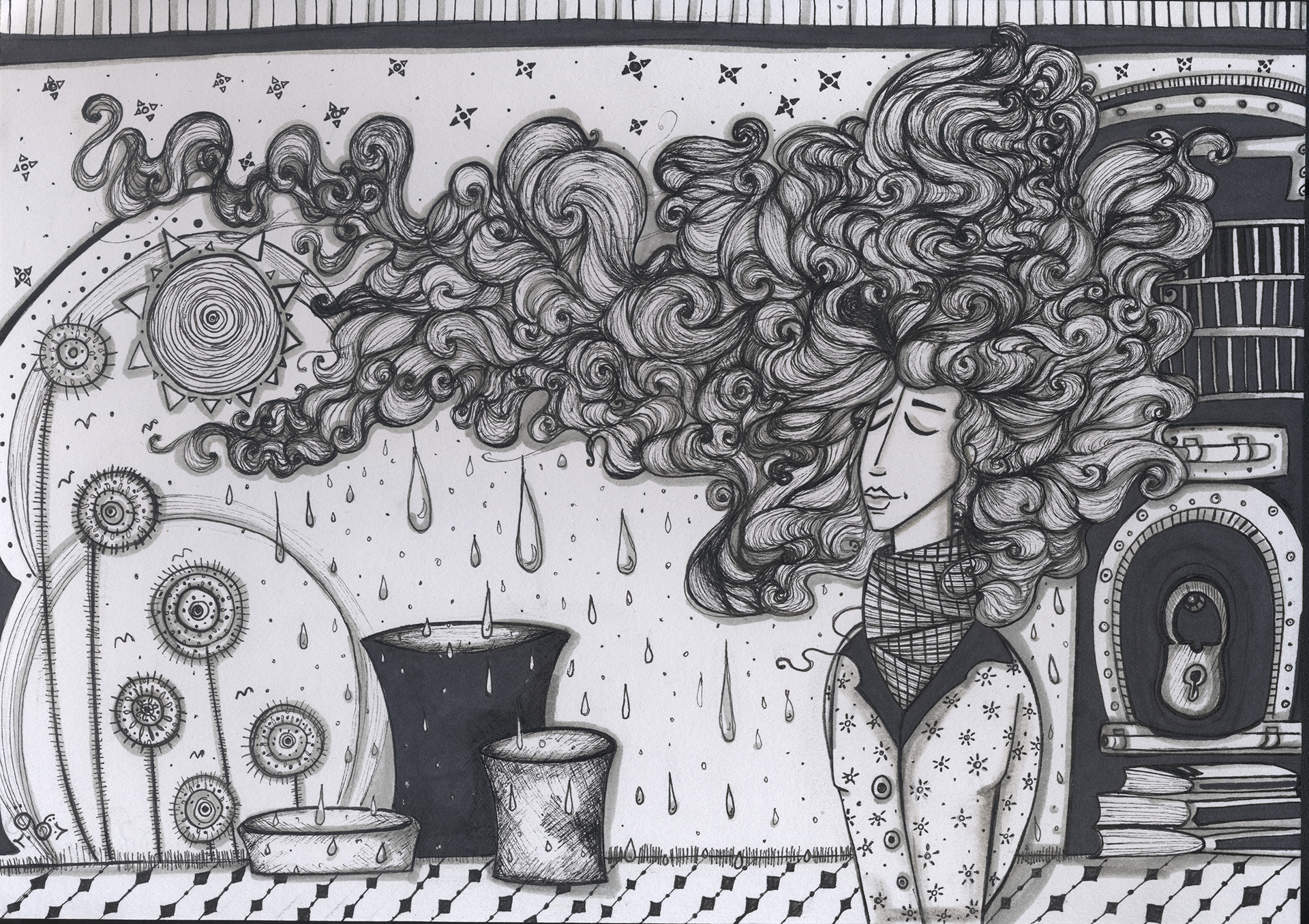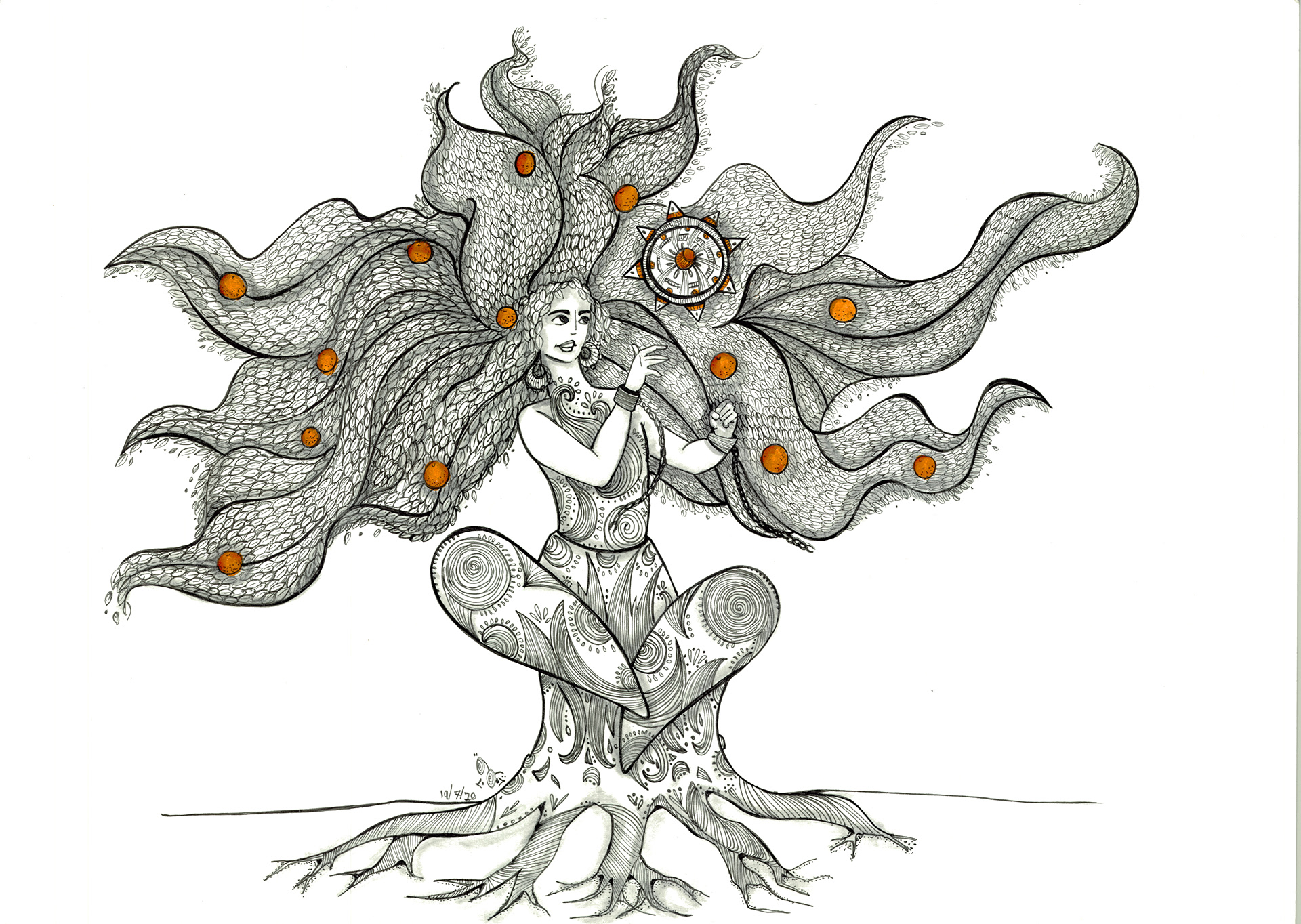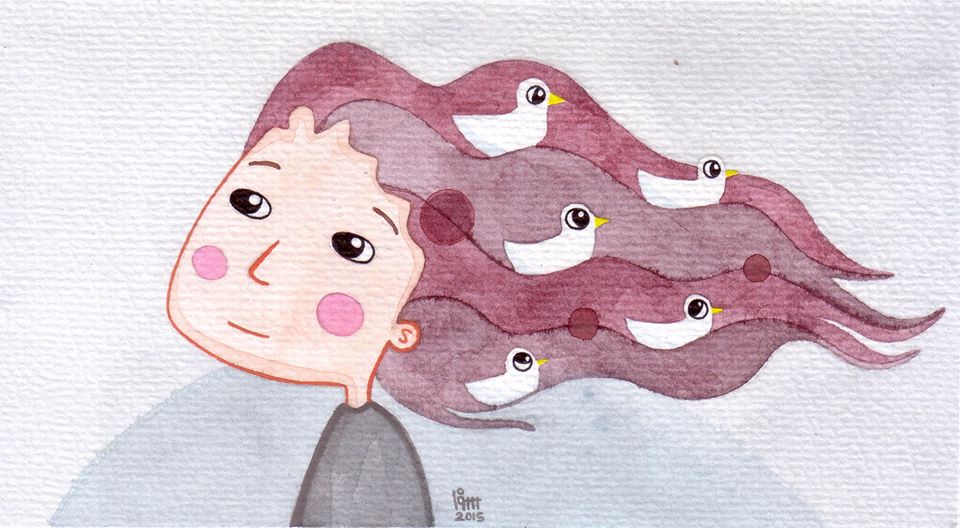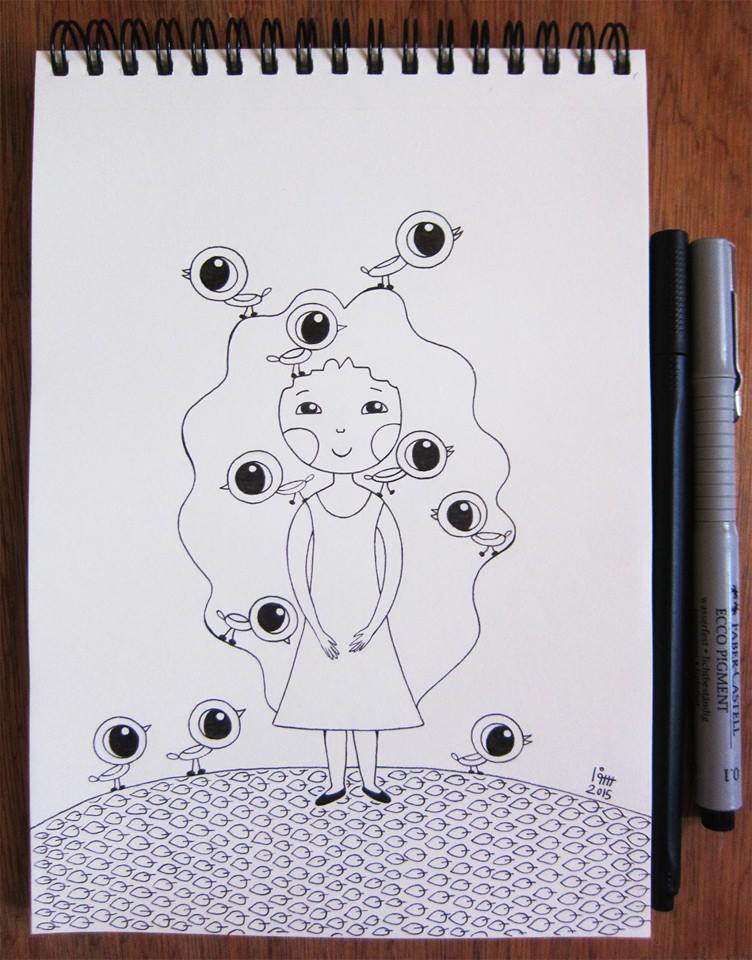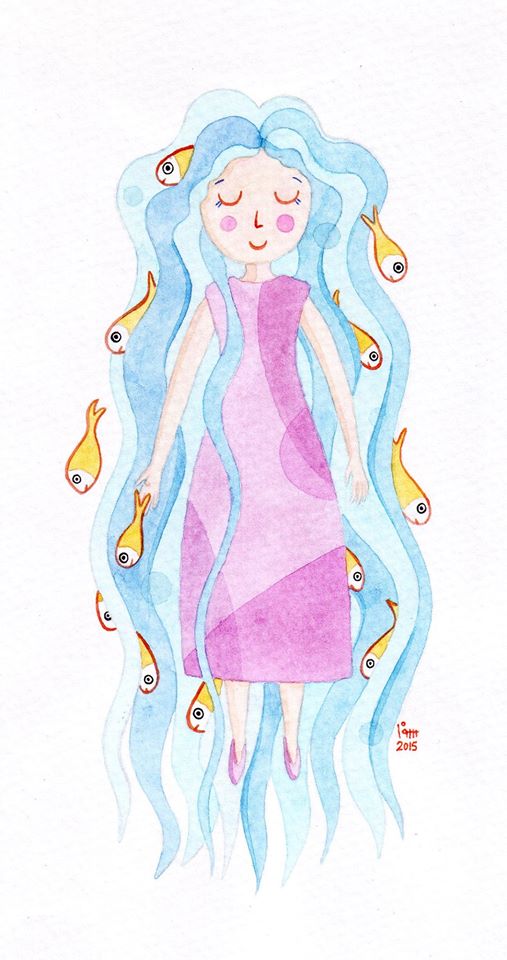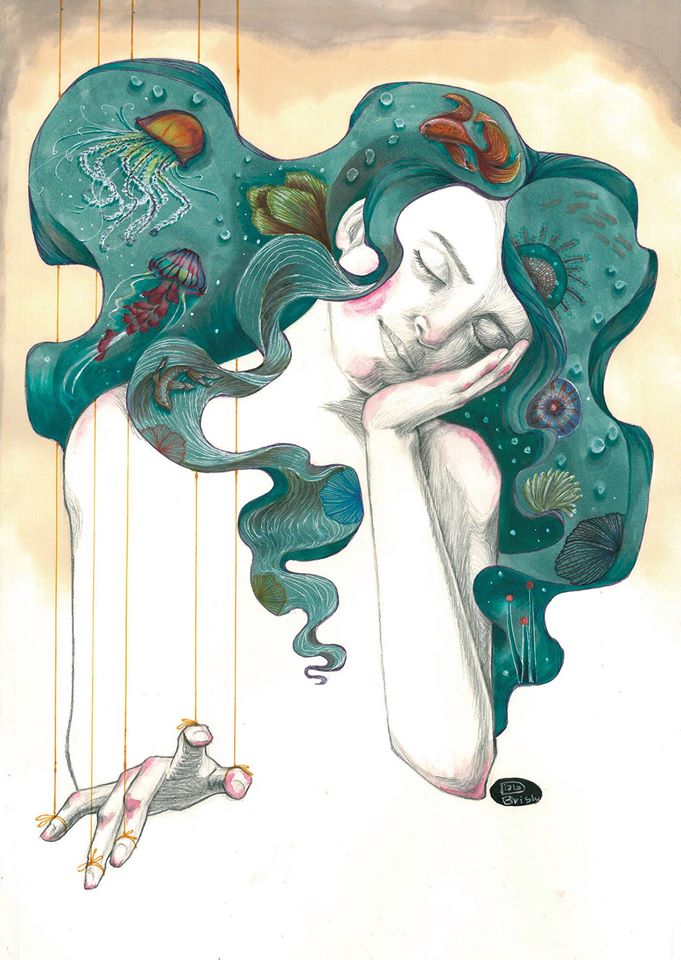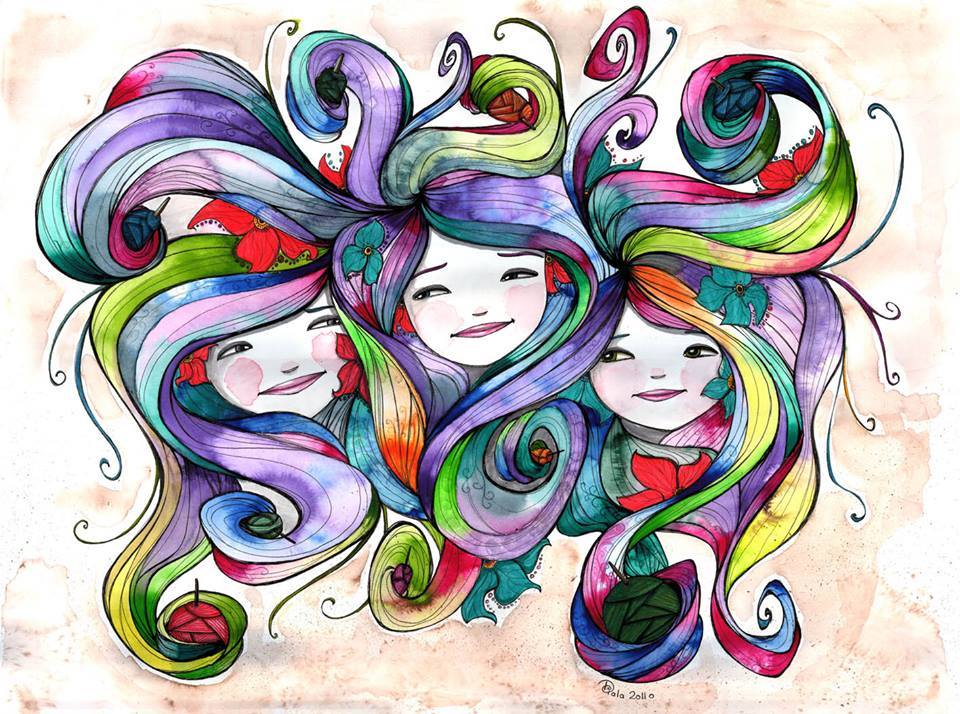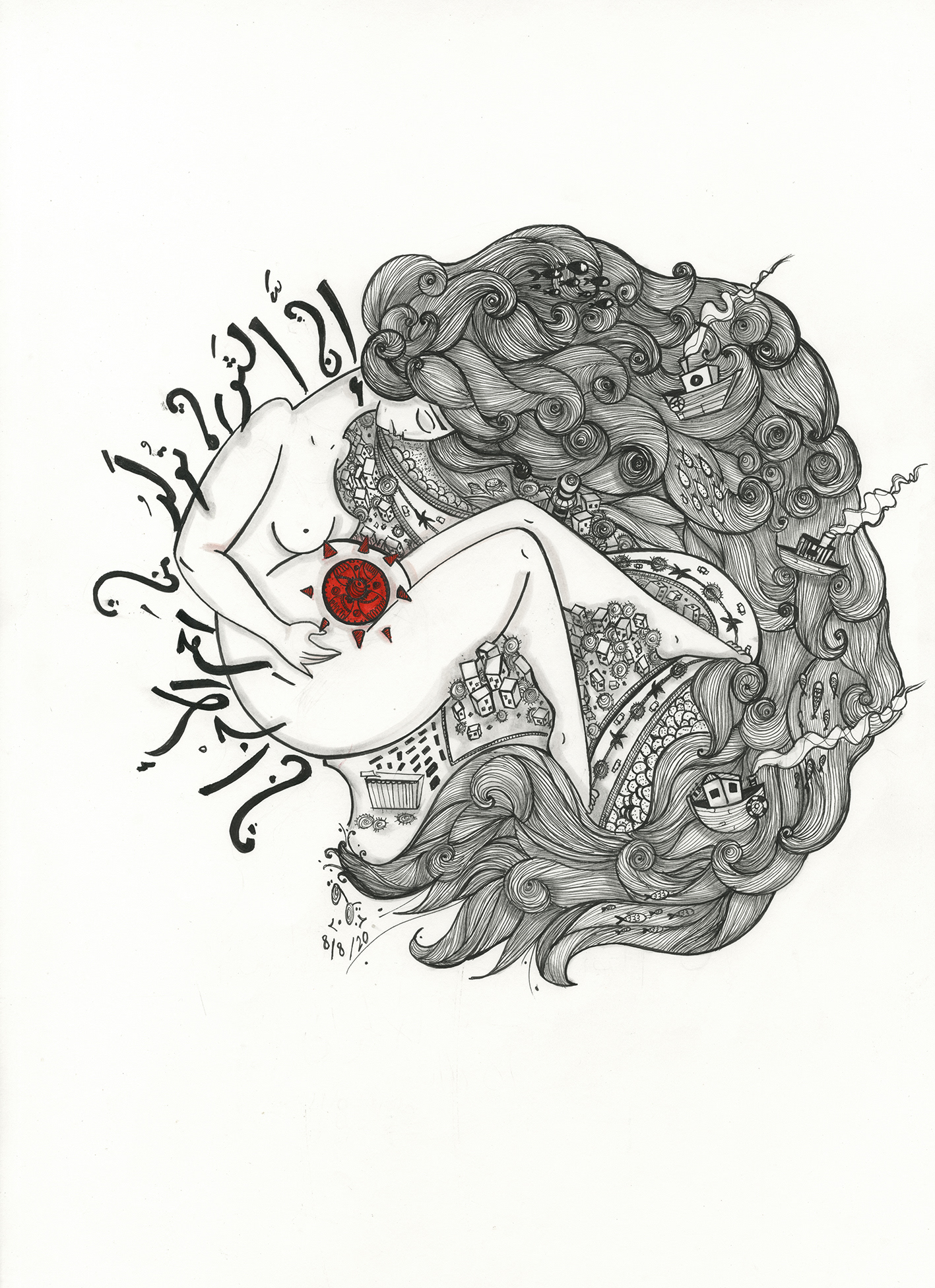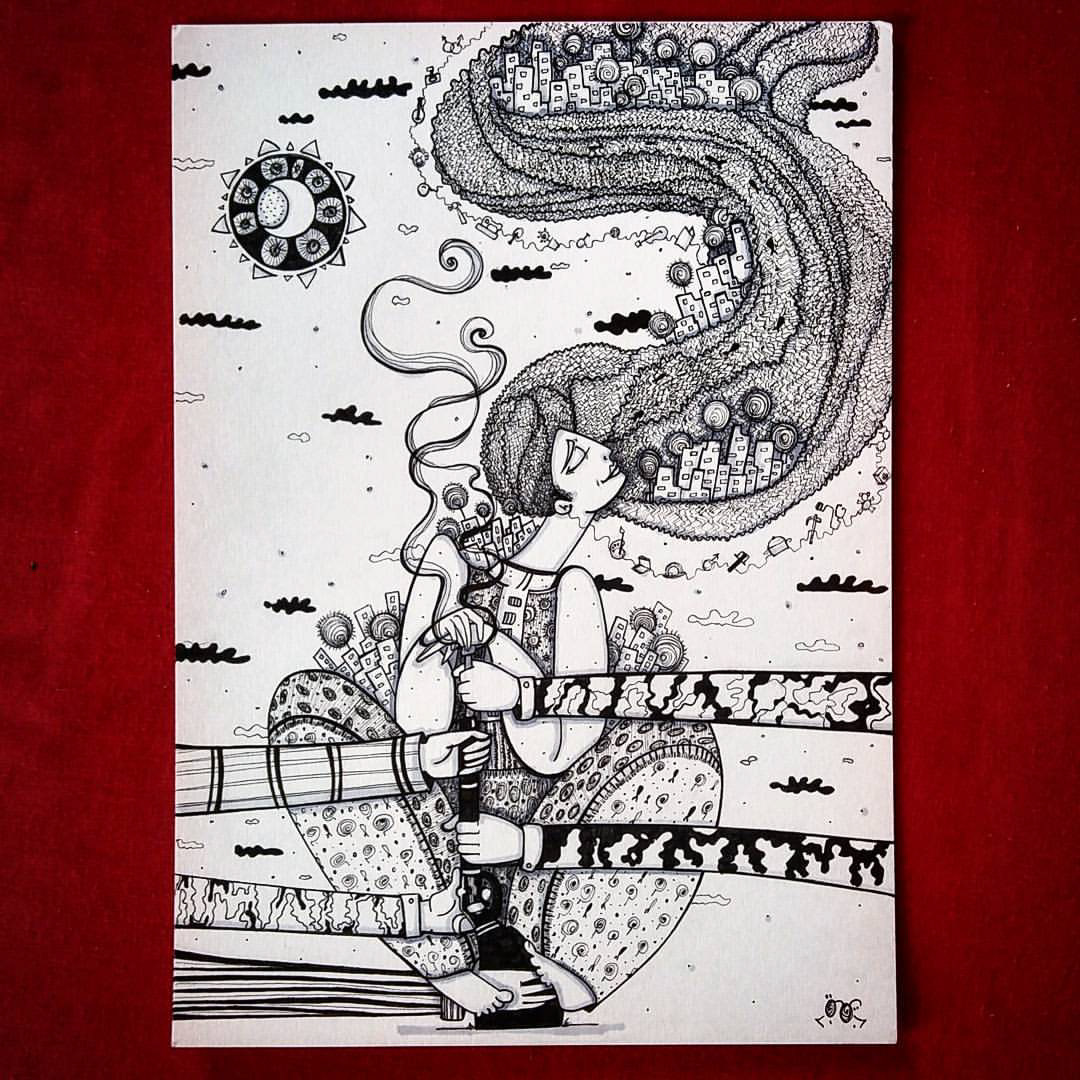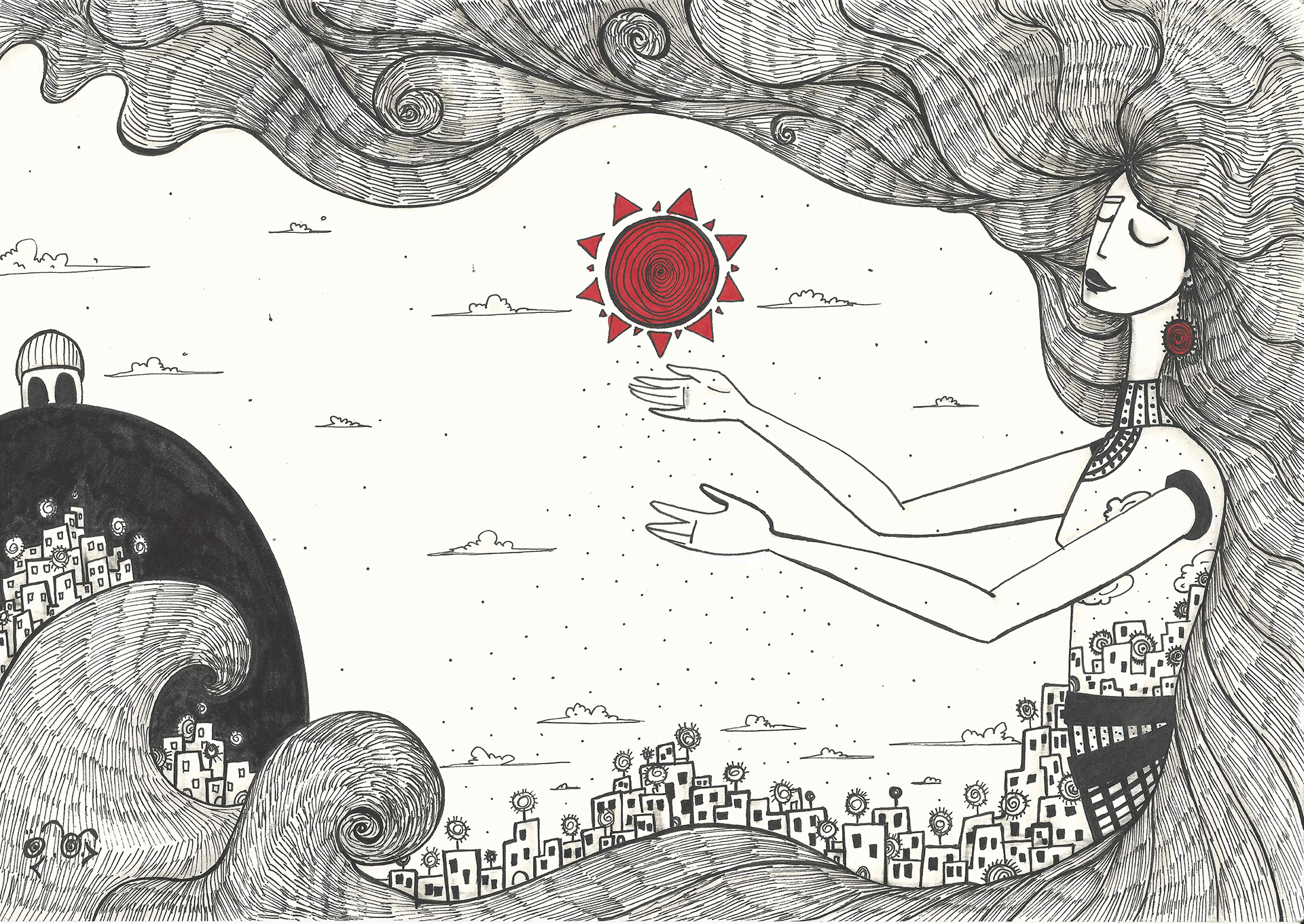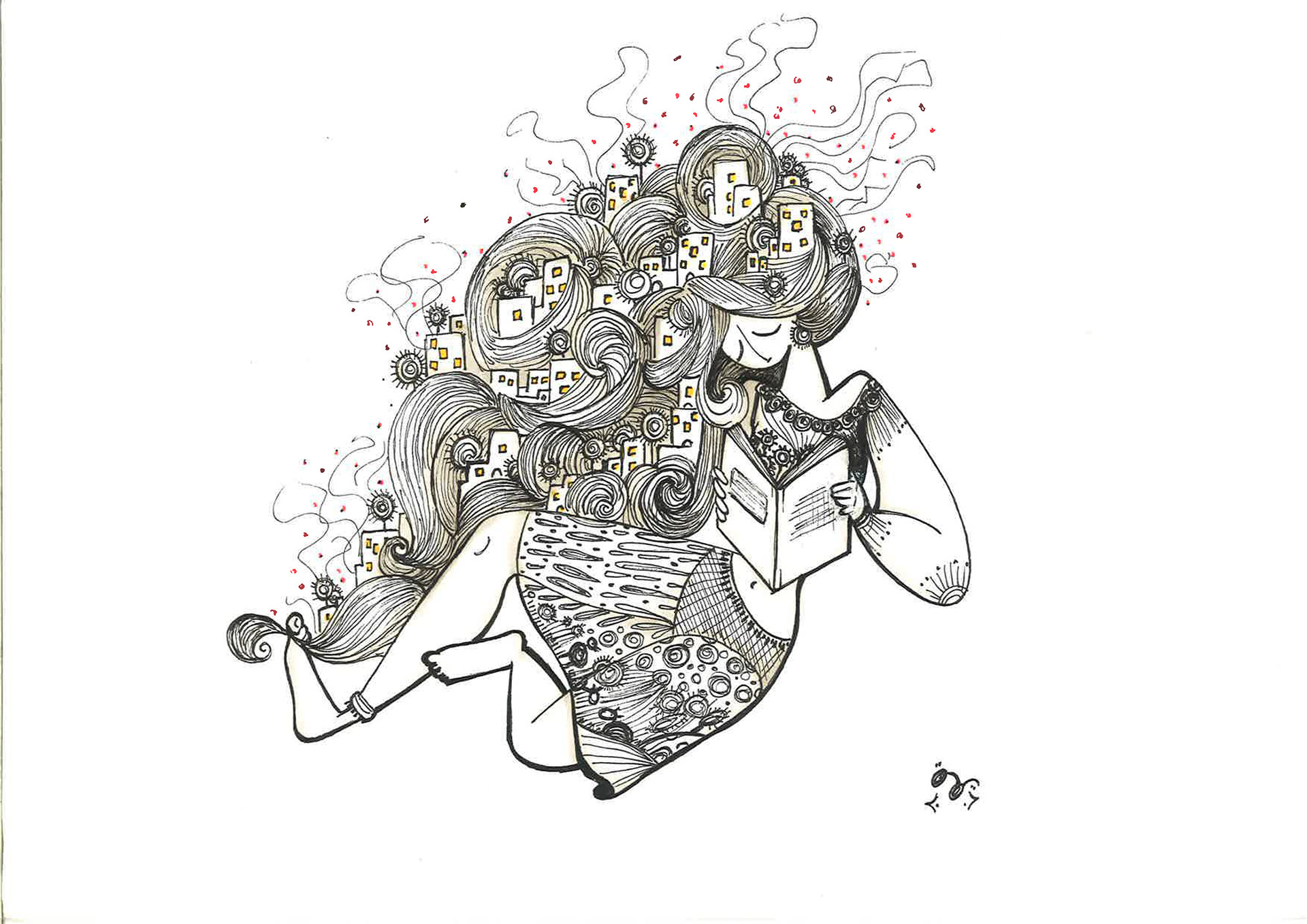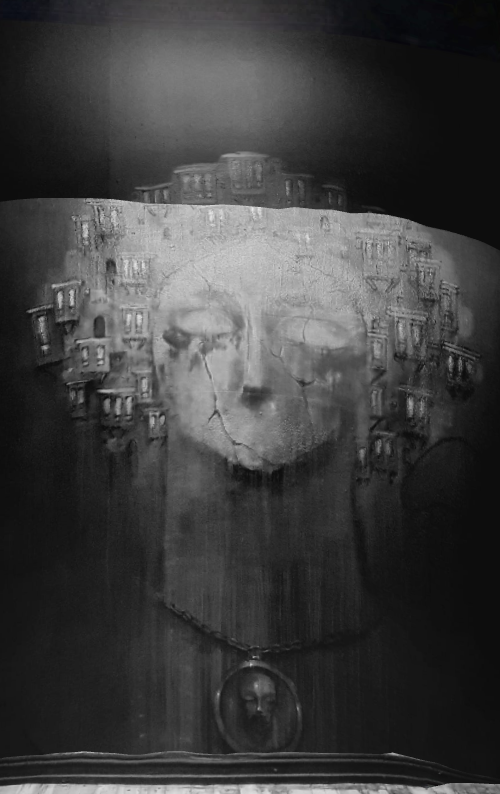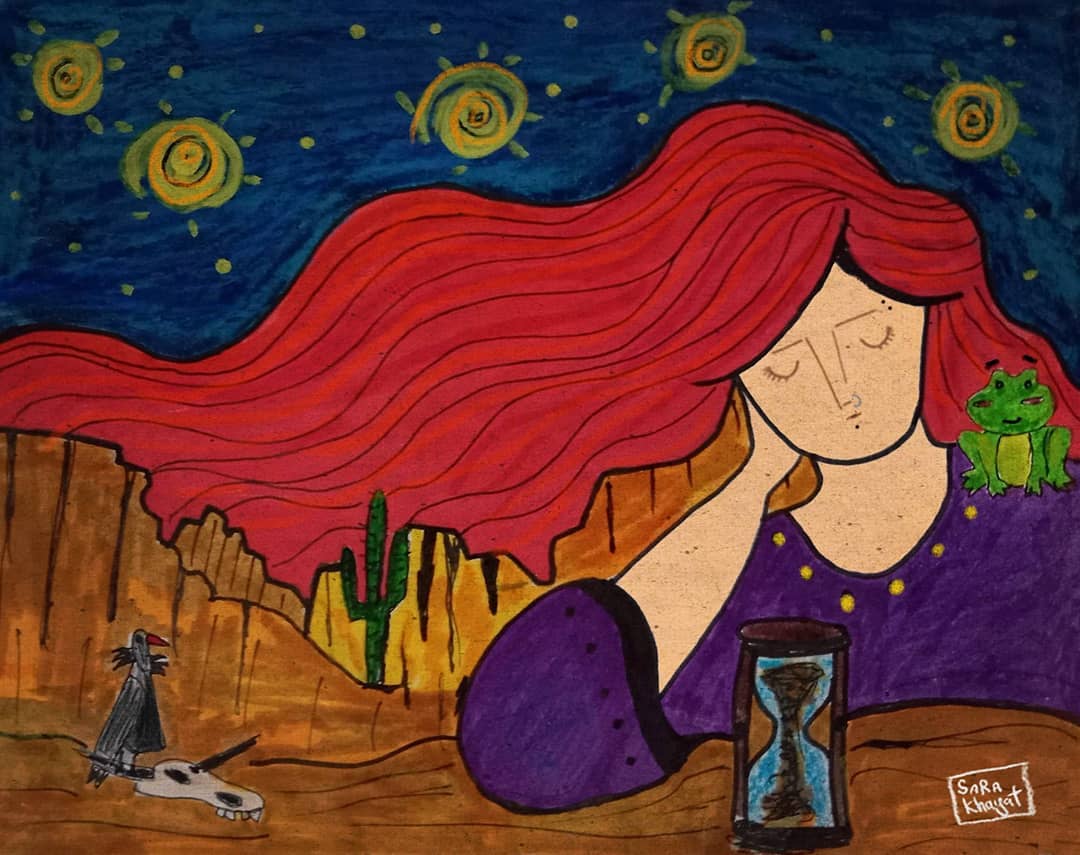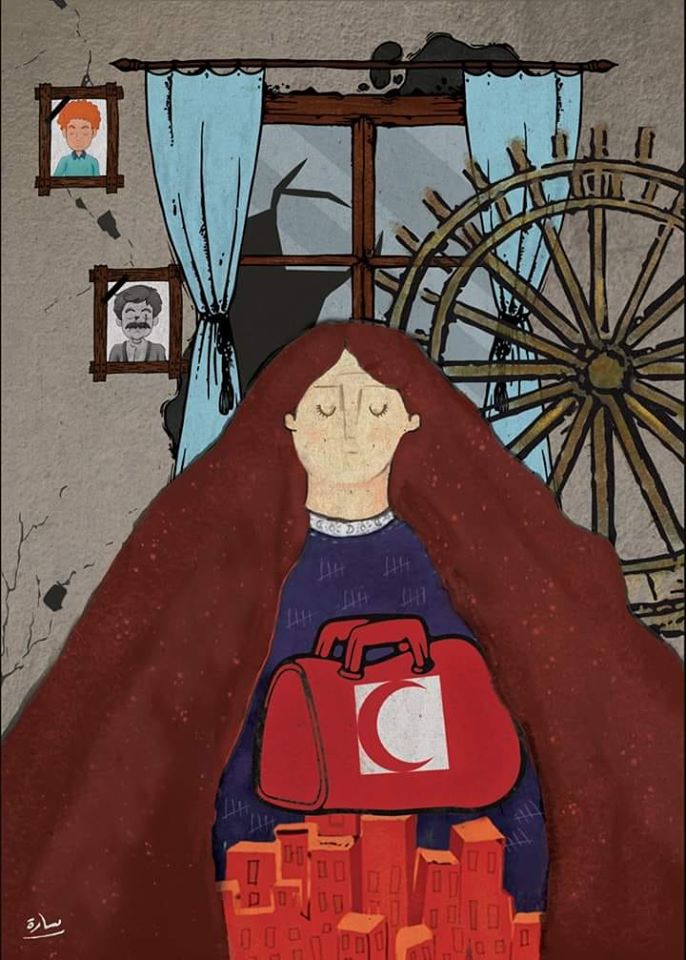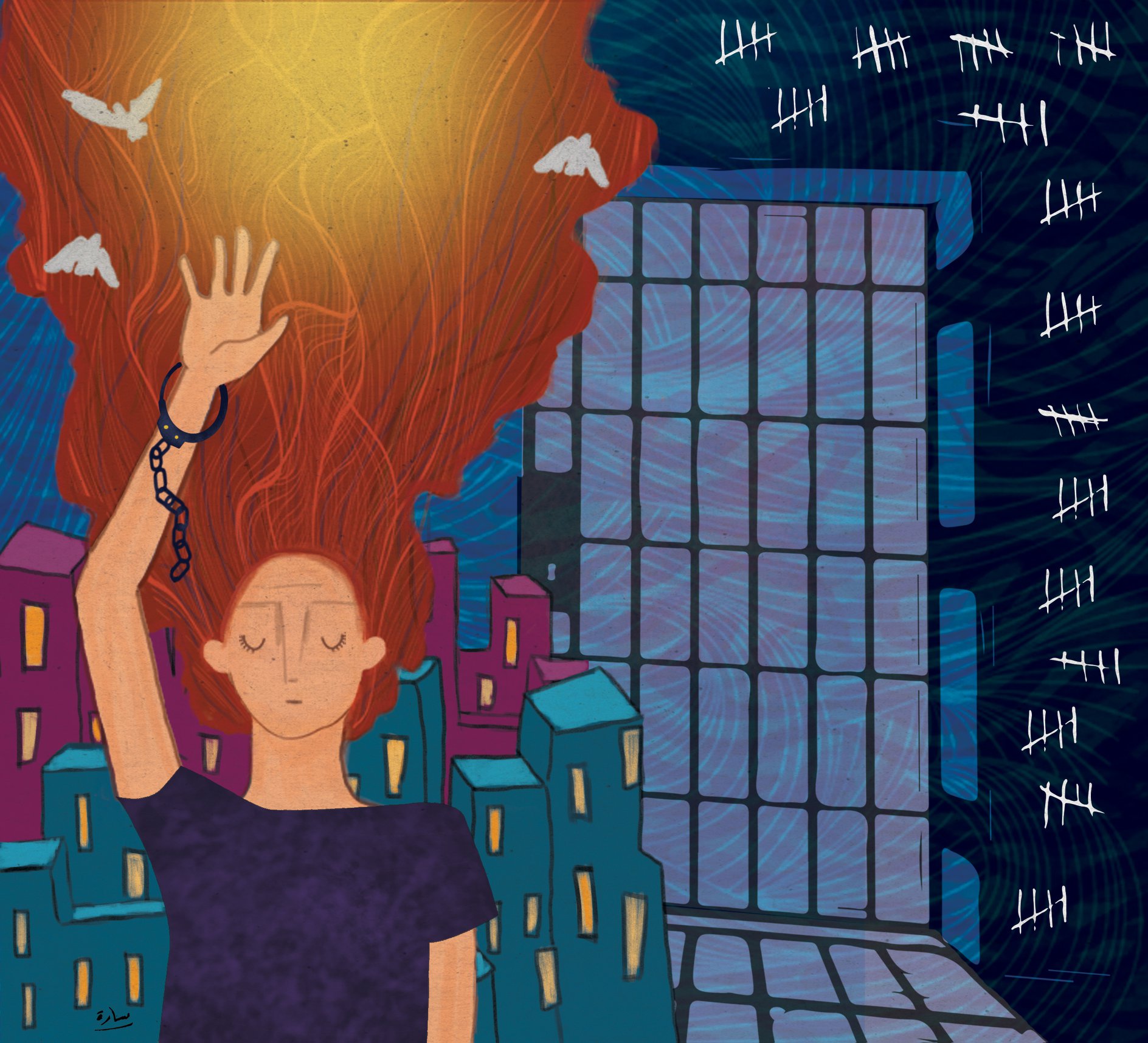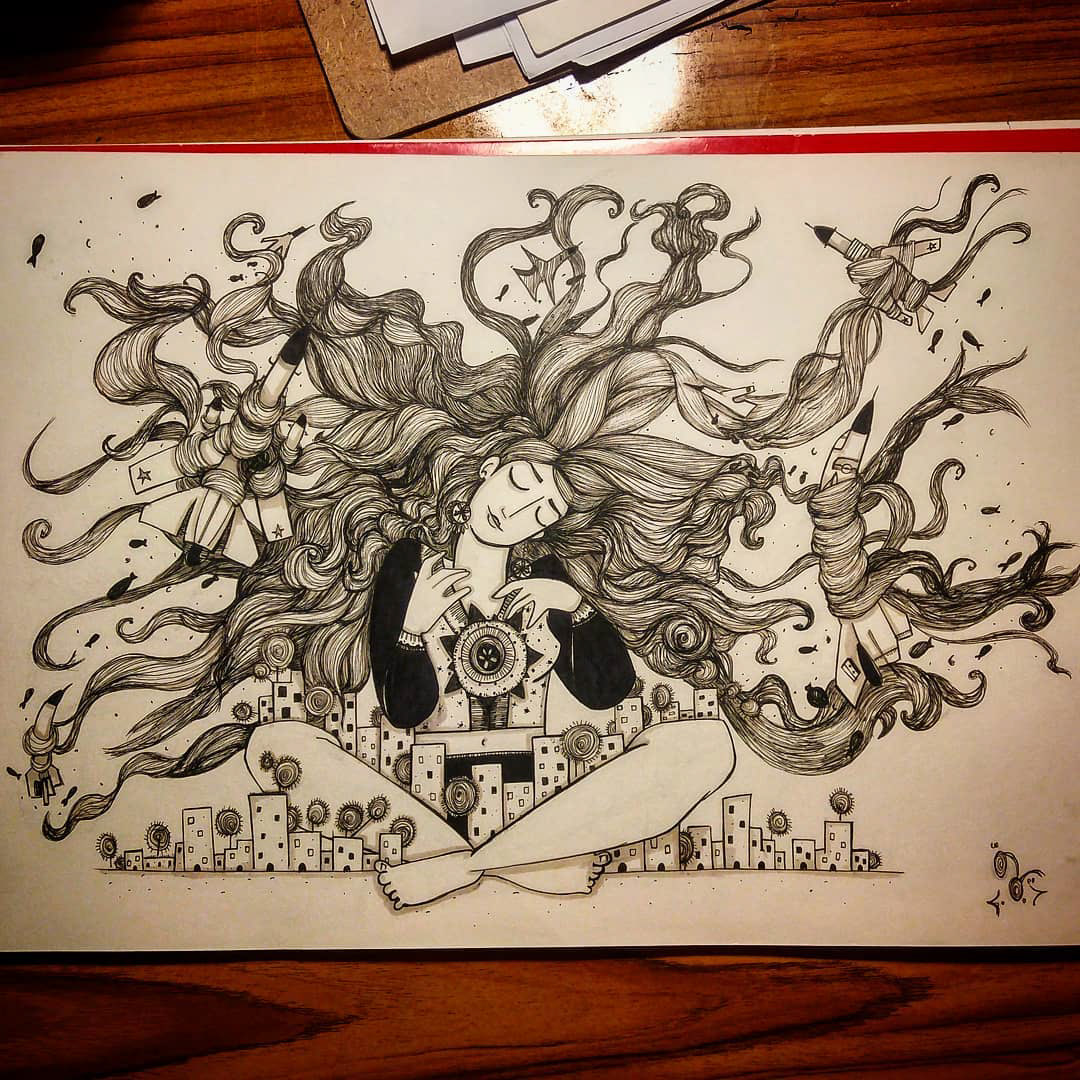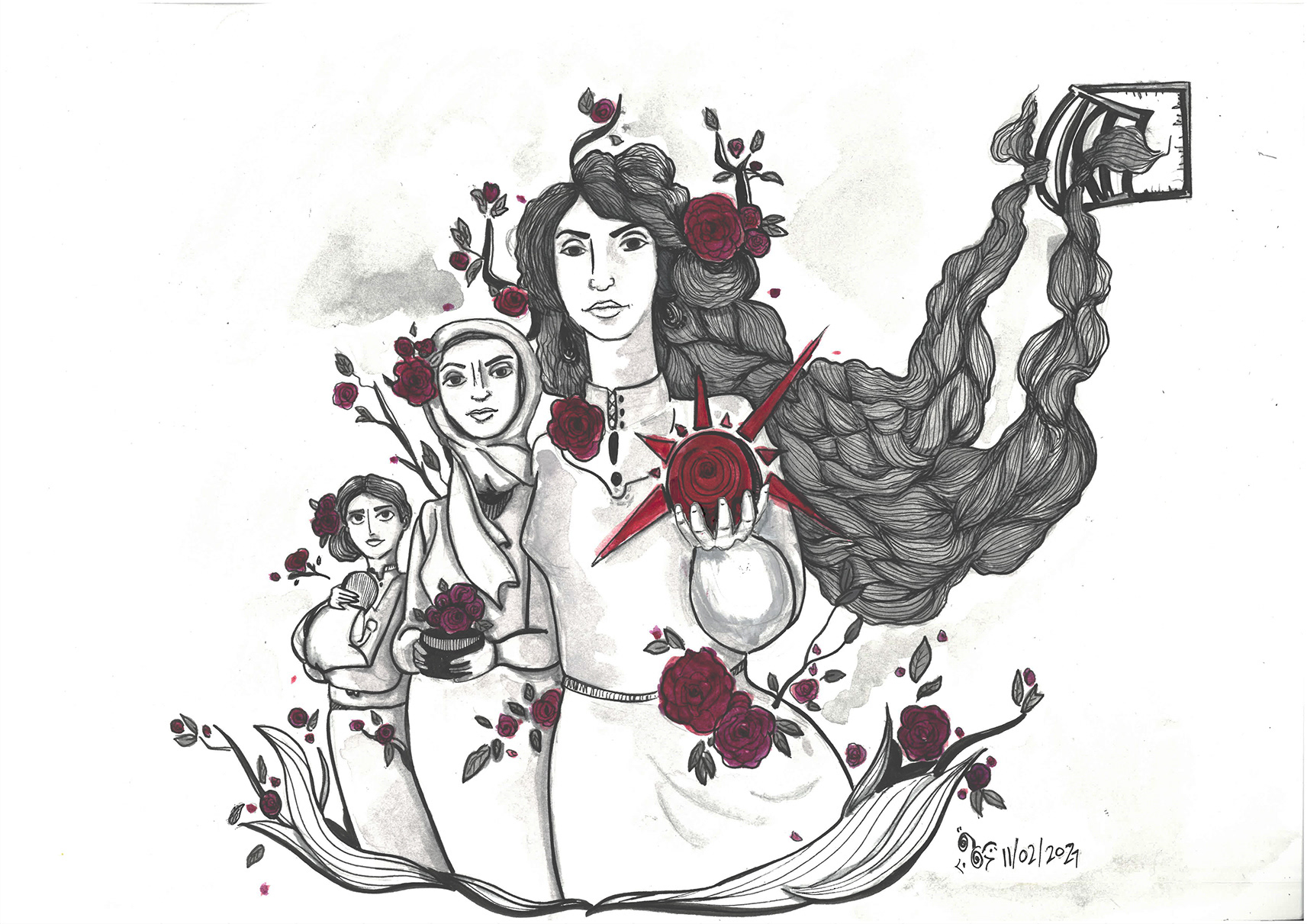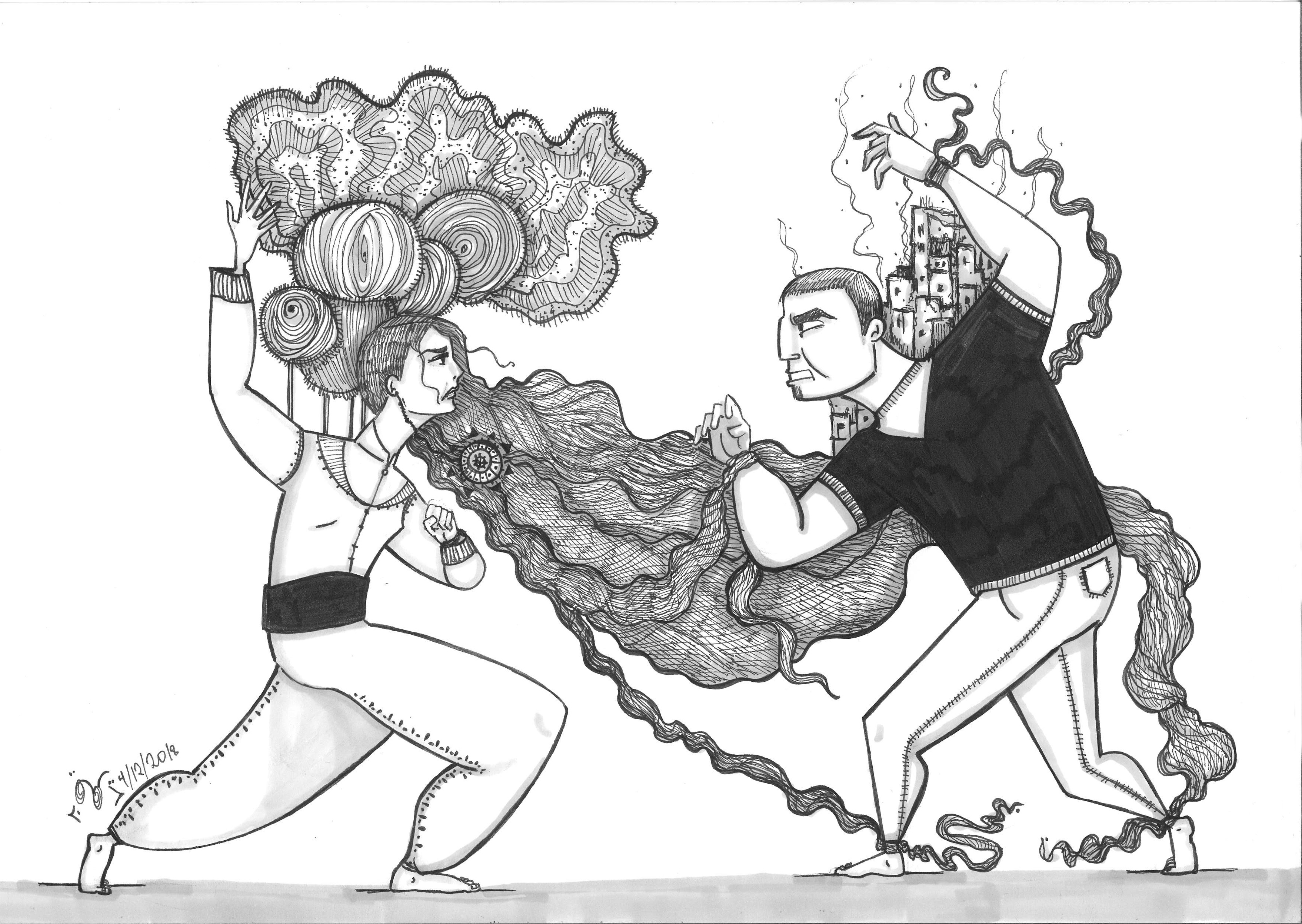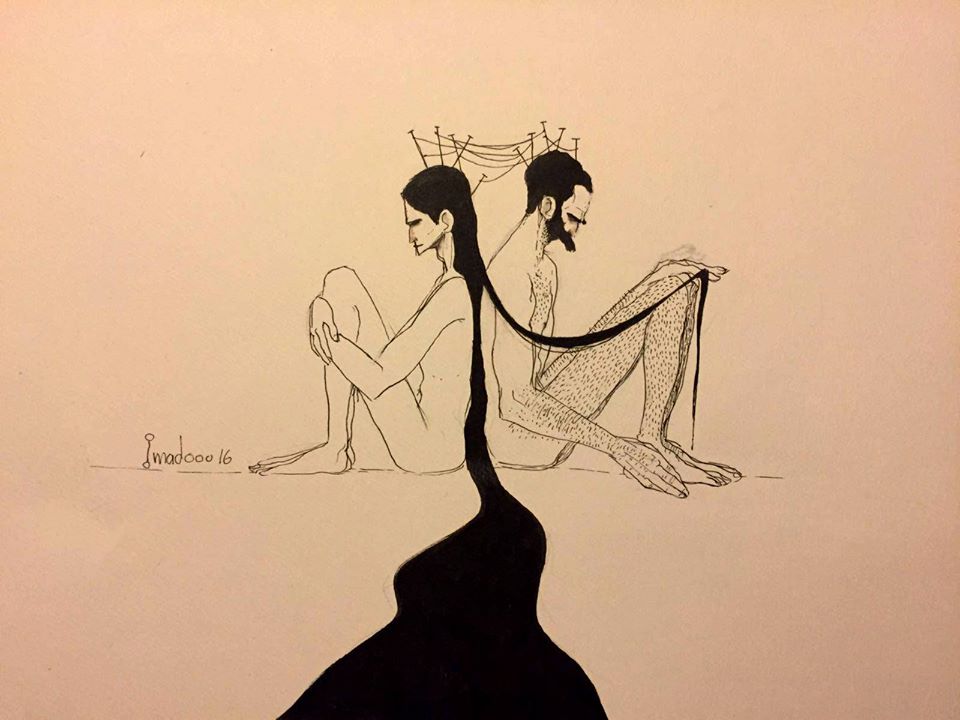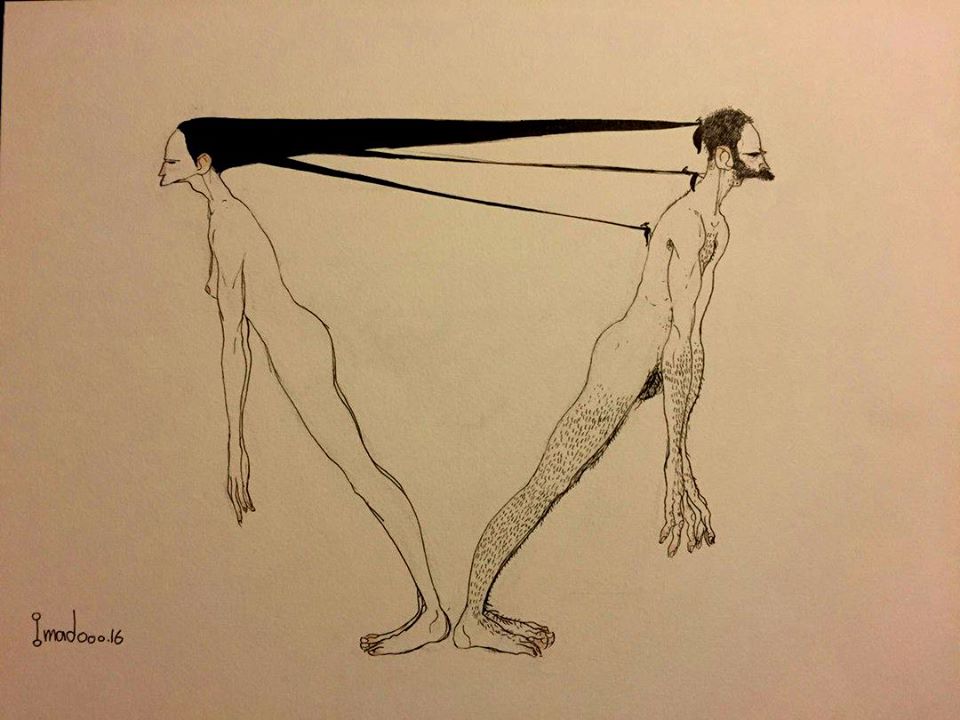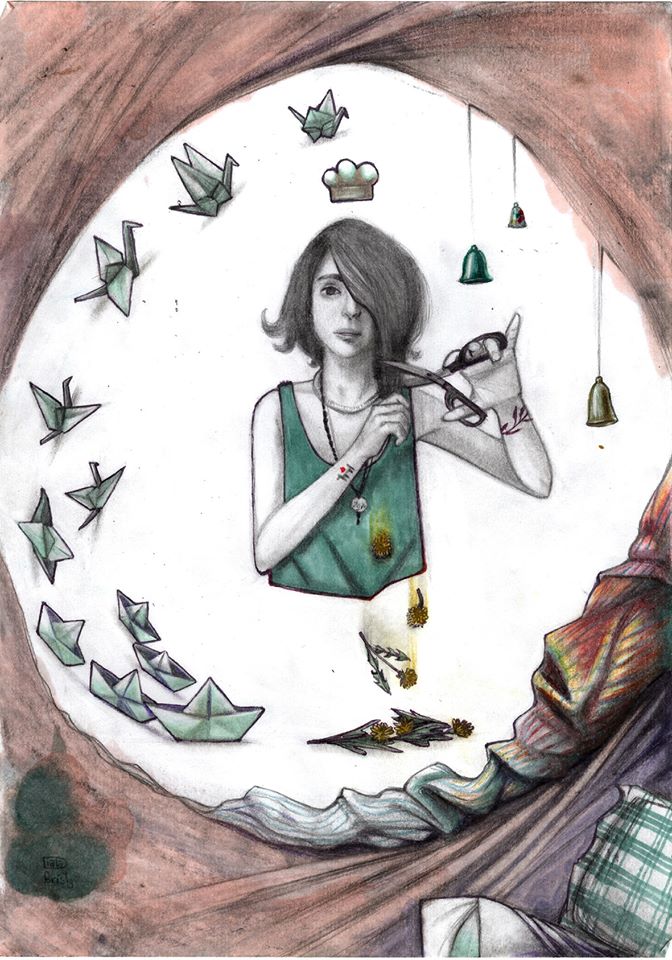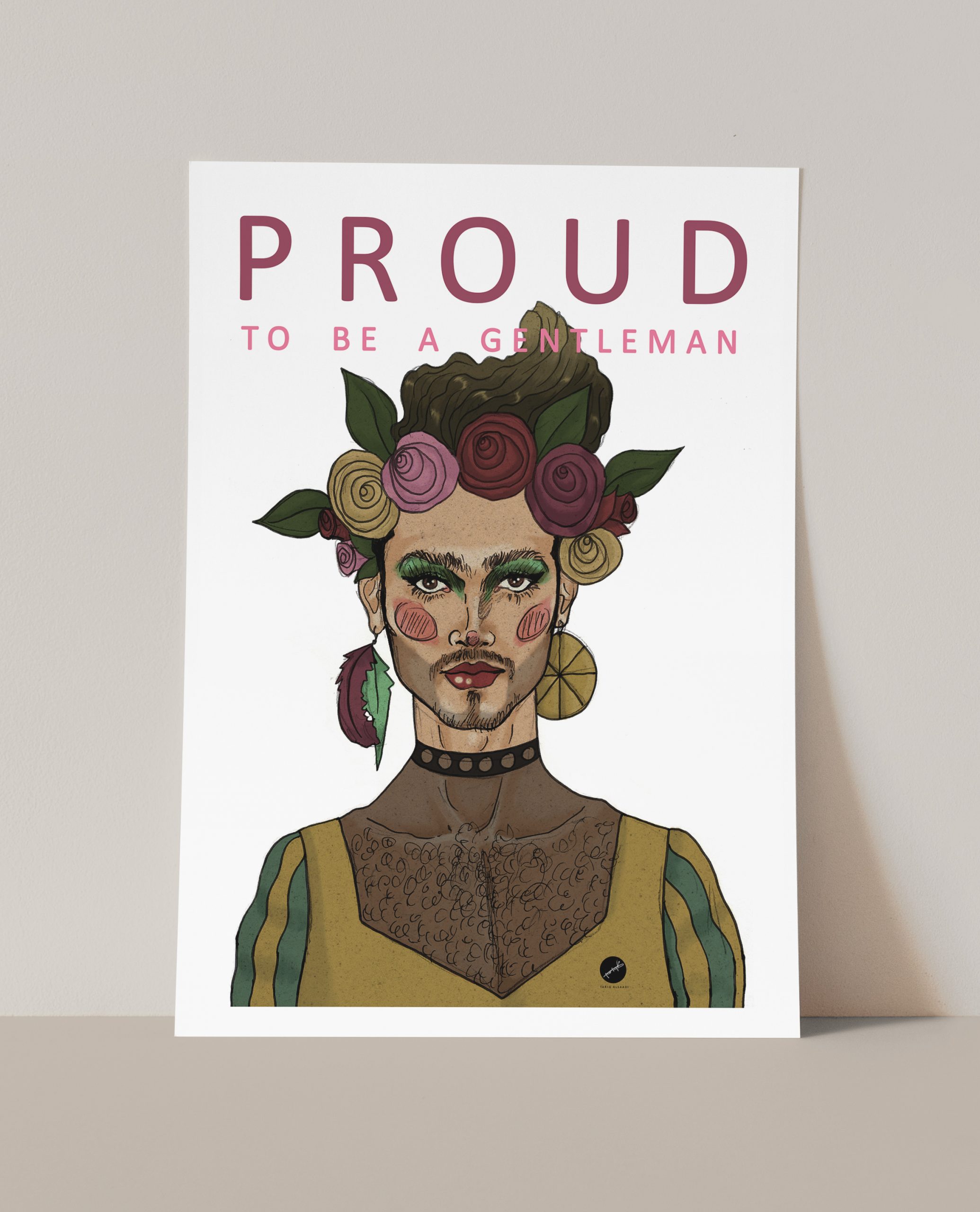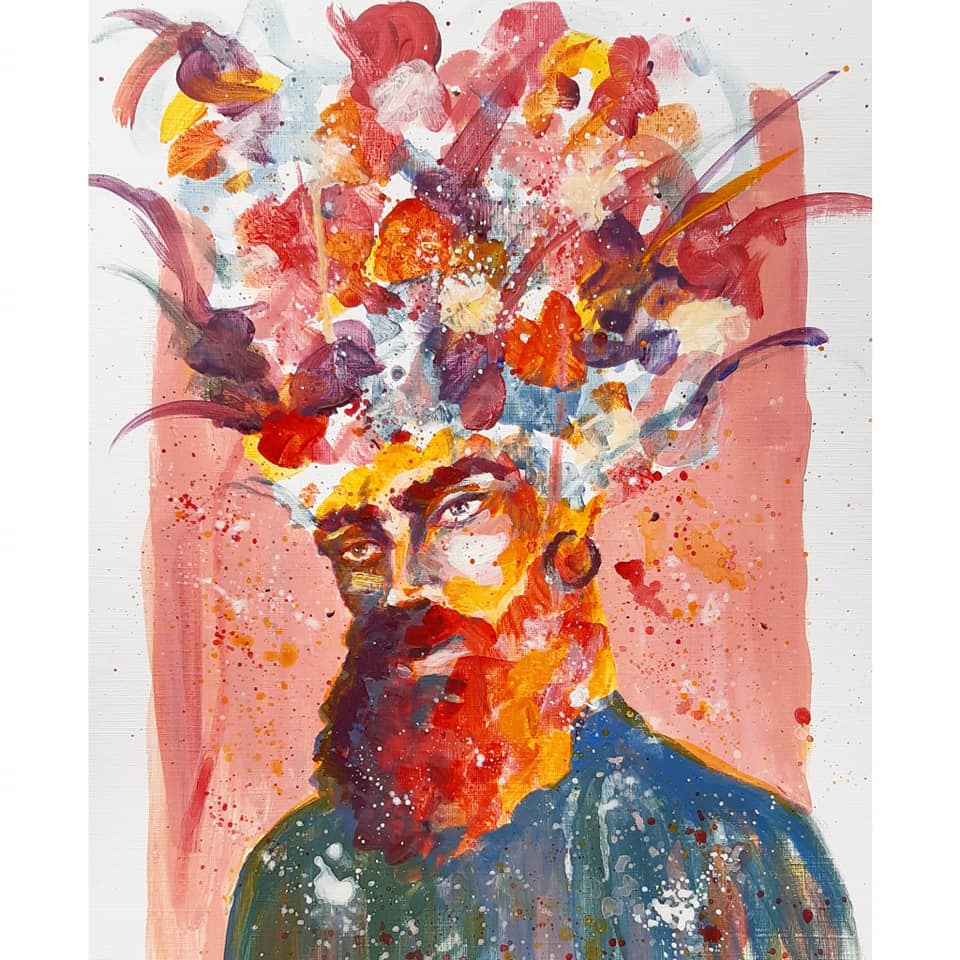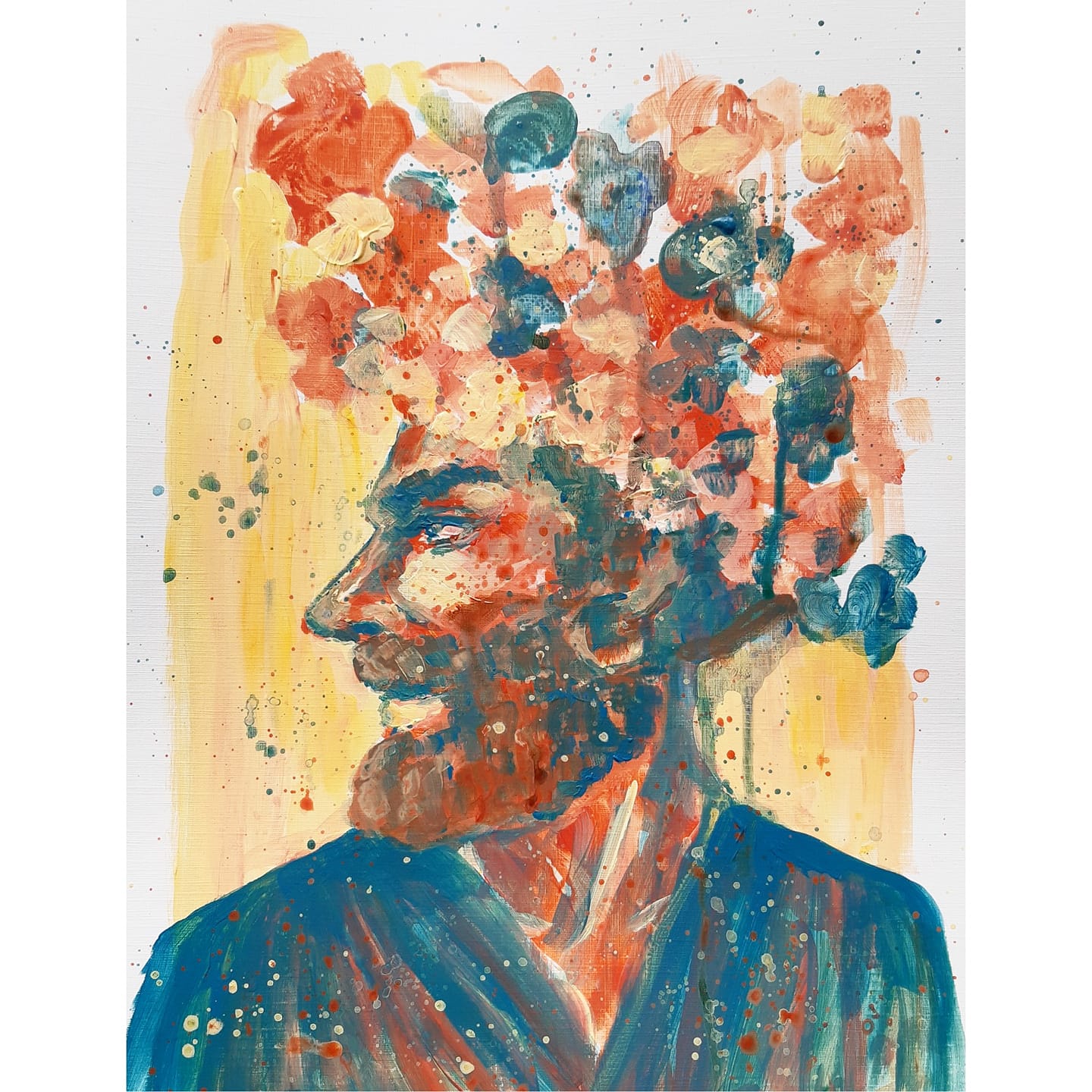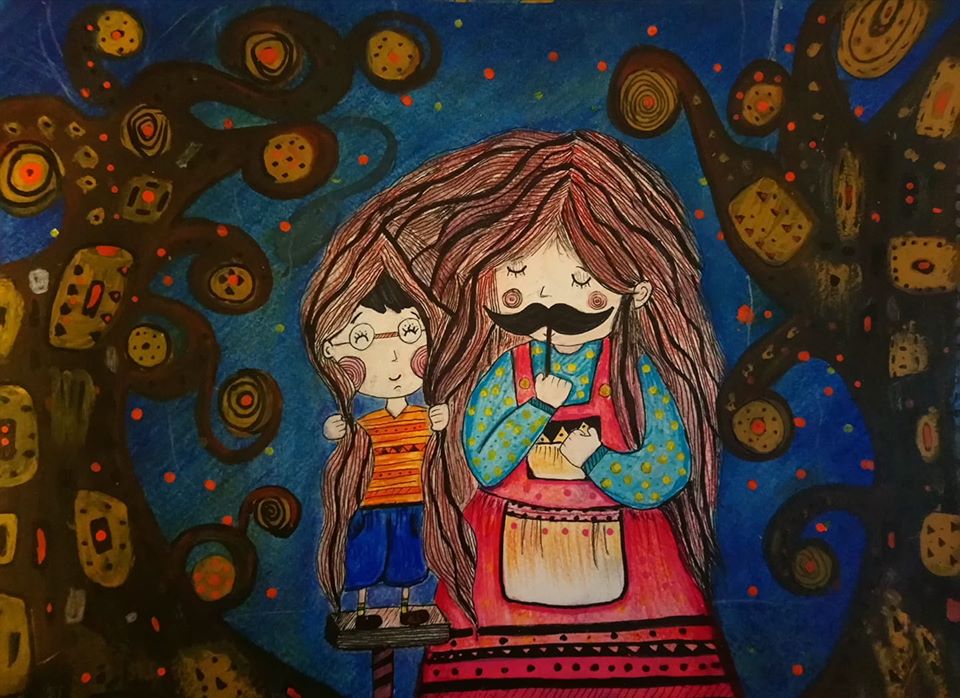How have artists been using Hair as a creative tool to tell empowering stories?
I’ve been looking at artworks in admiration, with this question resonating in my mind for years now.
My curiosity delves into the dialogues that occur between hair locks and the scenes depicted - how different levels of interpretation coexist in a single image.
I identified some crucial motifs that seem to return in many of the selected works:
Hair as a manifestation of Nature
Hair interacting with Cities
Hair as an active Presence that defends, protects, empowers and liberates
Hair encouraging Communication and Self-Expression
As you explore the artworks, you’ll be able to notice how these levels intersect and overlap more often than not. There is not a rigid distinction between the groups of works - I leave it up to you to create your own connections according to your perspective(s).
Hair as a manifestation of Nature
In the “Rainbow Journey” imagined by Diala Brisly, a visual correspondence between hair and rainbow establishes a powerful connection with nature. Through just this single colorful detail, the artist is masterfully able to let us get the first glimpse of her visual narrative: “This story is about materialism and people who are so busy with their phones, to the point that they can't notice the rainbow man’s effort. So he goes to the countryside where kids are actually waiting for him,” she explains.
In one of Dima Nachawi’s dedications to spark awareness about kidnappings, detention, and tortures, hair becomes similar to a cloudy sky with its rain. The artist writes how her drawing - dedicated to Mariam Haid - was born: “I was sketching while listening to her testimony and this was how I drew her. Her words reflected beauty despite of the tough and ugly experience she lived.” When looking at this moving image, one may think that the eyes aren’t enough for the tears that keep on coming to surface, so that even hair needs to cry it all out. At the same time, it reminds us that water is a benediction, so, as it generously falls down, it offers nourishment, it can be collected and preserved.
Hair flows turning into waves richly inhabited by fish and other water creatures (fig. 3, 4, 5, 6, and 7).
Somar Sallam is a master at creating a sense of inner peace and in her delightful illustrations hair shelters tiny and bigger birds: some seem to slide on the water surface, others are enjoying the quiet atmosphere they’re in.
The depiction of hair, the delicate orange fruits, and the roots in Dima Nachawi’s mesmeric dedication to Palestinian female detainees produces an astounding effect.
And then we have leaves, flowers, and other natural elements that sometimes seem to remark the presence of some inner energy we can’t see but we strongly feel.
The colorful, vibrant locks of hair spreading all over in Diala Brisly’s three-headed composition convey a sense of togetherness, of uniting in empathy. The artist mentioned cancer referring to “children who lost their hair” - from this perspective, the work acquires unexpected nuances, as the way we look at hair changes significantly.
Hair interacting with Cities
In Diala Brisly’s artwork for the cover of Alice Limoges’ track named Aleppo (2016), these big red flowers seem to turn into drops of blood, as the hair locks mix with the dark grey smoke almost like in an attempt to protect what seems to be Aleppo’s Citadel in the background, thus soothing that sense of helplessness even just for some moments. Read more about the work here.
In Dima Nachawi’s selection of artworks (fig. 10, 11, 12, and 13), including her moving tribute to Beirut with the phrase “The revolution is born from the womb of misery”, cities seem to receive the support of majestic, wavy hair locks. From the act of reading that nurtures the imagination to the essential role of civil society, we may perceive hair as being actively engaged in encouraging the local communities and infusing a new vital force into them. We know how powerful the mind is, and in these scenes hair seems to find its trajectory thanks to the guide of wise thoughts.
In Anas Salameh’s black and white composition hair seems to take the shape of buildings all around the human figure we see. There are cracks on this face that resemble traces of tears. A silent participation prevails.
In Sara Khayat’s first scene hair creates a sort of a bright red landscape, and while constituting an inherent part of the desert-like environment, with its vital vibes, it is also in contrast with it (fig. 15) . May that space be a projection of the protagonist’s suspended mood and hair an expression of a search for joy? In the other scene (fig. 16), in memory of the 1982 Hama massacre, the human figure portrayed is surrounding the city with long voluminous hair as if to embrace it and protect it with an aura of solemn respect.
Hair as an active Presence that defends, protects, empowers and liberates
This artwork by Sara Khayat is the cover of the book “So I’m Not Kept In The Shadows. Oral Memory: Syrian Women Survivors of Detention” by Lama Kannout for The Day After (2019). Here hair seems a direct reference to freedom, it makes me think of an open sky - despite still in a handcuff, the arm of the woman is now free to move and tiny birds can finally fly without constraints towards the warm sunny light.
In Dima Nachawi’s illustrations (fig 18, 19, 20) hair locks become a tool of defense able to fight against an assault, break the cage of stigma and defy every attempt of attack. A wider, deeper consciousness takes the stage and cannot be overlooked. Moved by a single yearning, pursuing the same goal: if we think about it, a hair lock is strong even because it is in itself a community.
Hair encouraging Communication and Self-Expression
In these two illustrations by Imad Alwahibi (fig. 21, 22) hair is what connects the two human figures. In the first image, it ignites a conflict: what is their real desire? To quit or to stay together? In the second one, hair traces a sort of a path. The couple portrayed also makes me think of two sides of a single individual’s personality trying to communicate with each other, however difficult it may be.
What I love the most about Diala Brisly’s artwork with scissors cutting hair is the cycle that one could see in the scene. It looks like the paper boat is gradually becoming the paper bird, as hair turns into flowers. Each of these elements may be detached from the others as well and still maintaining this sense of being part of a dialogue going on between them.
Tariq Alsaadi’s “Proud to be a gentleman” says it all. The affirmation and the elegance of the representation reinforce each other and the words are echoed in the confident, firm gaze the viewer receives (fig. 24, 25, 26). Hair is contoured by exquisite flowers and leaves, becoming luminous toward the top. A brightness that literally blooms in these other two artworks, in which hair and beard are rendered through beautiful hues. As our eyes go up following the direction of hair, we find it blended with colorful shapes that suggest a variety of floral motifs, with this total sense of freedom they convey.
Sara Khayat’s artwork was chosen by the Dammeh Cooperative for their calendar (December 2019) “to free minds of typical roles of gender”, as the artist writes. In the background these sorts of trees made of biscuits (I had this thought and now I can’t help but see it!) give such a sweet tone to the composition, somehow following the gentle movements of hair and improvised mustache and attuning to the quietness of the hearts we see in the middle of the scene.
I want to highlight that after the terrible earthquake in February many artists - some included in this selection - decided to sell their artworks in order to support the populations in Syria and Turkey.
Thanks to these amazing artists: Diala Brisly, Sara Khayat, Dima Nachawi, Tariq Al Saadi, Anas Salameh, Somar Sallam, Imad Al Wahibi.


